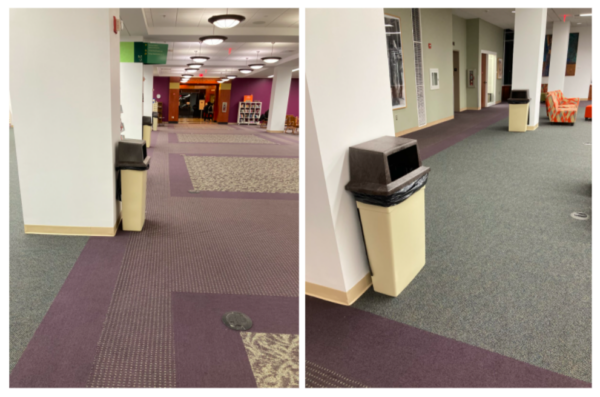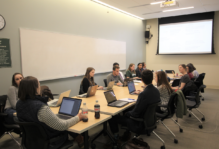Bin Liners: An Opportunity to Drastically Reduce Single-Use Plastic
Margaret O’Connor ’23
The typical American tosses 110 pounds of single-use plastic every year. With approximately 10,000 students, faculty, and staff, the William & Mary community uses over a million pounds of plastic every year. This means that W&M facilitates the usage of a lot of single-use plastics. Consequently, this means that W&M has a responsibility in reducing the use of single-use plastics. William & Mary is only miles away from both the York and James Rivers, which both feed into the Chesapeake Bay. William & Mary’s Virginia Institute of Marine Science (VIMS) is directly on the York River. This is important because when single-use plastics make their way into bodies of water, they harm marine ecosystems.
I applied to this semester’s project of reducing single-use bin liners to learn more about how sustainability projects are created at W&M and to try to help create a positive change in the reduction of waste on campus. Working as a Sustainability Ambassador this semester was an opportunity to learn more about how state policy on plastics is affecting campus policies and decisions. Executive Order 77 (pdf) in Virginia requires the immediate ban of some single-use plastics (ex: bottles, bags, bin liners) in 2021, and virtually all single-use plastics by 2025 for all state universities. This creates a pressing need to analyze all single-use plastic use at W&M, start eliminating the purchase of these items, and find alternatives.
My project partner Zach Roberts and I worked on the “Waste and Recycling Bin Liner Reduction” project. Bin liners seemed to be one of the more minor factors of single-use plastic waste, but this was a misconception. Bin liners are likely not the first type of plastic that comes to mind when thinking about single-use plastic waste (like single-use plastic water bottles); however, they are everywhere and make up a significant portion of all single-use plastic products at W&M. Upon further thought, the high impact of bin liners starts to make sense as you become more aware of how common they are. For example, in Swem Library, there are at least six trash cans lined with plastic, as shown below with these two pictures (both taken at the same location with three trash cans in each).
Liners are replaced daily across William & Mary’s (and VIMS’s) campus, which adds up to an incredibly high amount. For context, the average person uses about 83 plastic liners (pdf) each year. At a university level, this value is much larger.
Below is an overview of some of the steps that Zach and I had the opportunity to take and learn about during our project:
- Meeting with Facilities Management advisors Bob Morman and Mark Brabham to discuss plans for 25% bin liner reduction by 2022.
- Review of literature on effects of single-use plastic in general and more specifically single-use liners.
- Research into the steps taken by other schools to reduce single-use bin liners.
- Formulation of questionnaire to collect data on both W&M and VIMS of the number and location of bins in each building, bin (and therefore liner) sizes, and additional notes on the bins.
- Analysis of data collected by this questionnaire.
From our data collection, we observed some interesting phenomena, such as the fact that trash cans were often marked as “yes “ for “does the bag need to be replaced?”, even for trash bins that had no trash in them. We also learned that collecting and analyzing all the data needed on the liners to make decisions was a lengthier process than expected due to the expansiveness of the waste disposal system at W&M.
Overall, this project was a great experience to learn and get to have even a small impact on internal decisions being made to adjust to Executive Order 77 and to make the campus more generally sustainable by reducing plastics. Overall, single-use plastic waste is a multifaceted issue that needs to be addressed urgently and attacked from all sides, from individuals, policies, and institutions.
To learn more about W&M and its specific policies and plans on single-use plastics and waste, explore some of the links below:





No comments.
Comments are currently closed. Comments are closed on all posts older than one year, and for those in our archive.